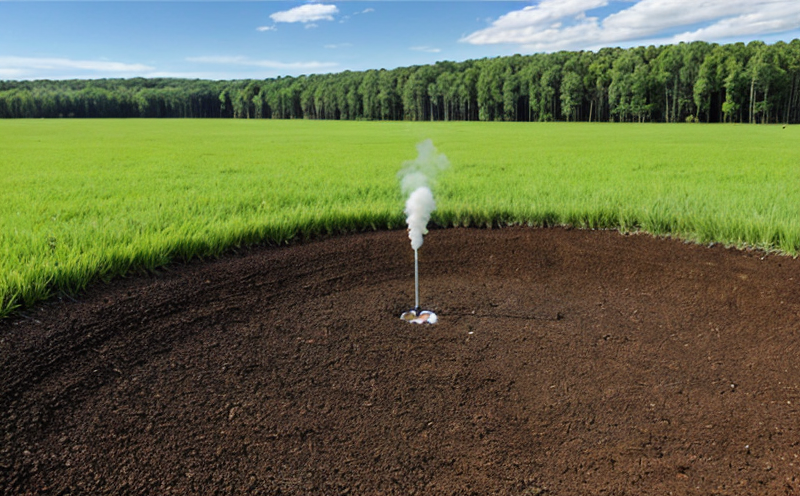EPA 365.1 Phosphorus in Mining Effluents Testing
The EPA 365.1 method is a critical regulatory requirement aimed at quantifying total phosphorus levels in mining effluents. This test is essential for ensuring that mining operations comply with environmental regulations designed to minimize the impact of runoff and wastewater on aquatic ecosystems. Phosphorus, when present in excessive amounts, can lead to algal blooms which deplete oxygen levels in water bodies, harming aquatic life.
The method involves a series of steps aimed at accurately measuring phosphorus content. Initially, mining effluents are collected from various points within the operation. These samples must be representative of the entire discharge stream. After collection, they undergo a process known as acid digestion to ensure all forms of phosphorus are available for measurement.
Following digestion, the sample is filtered and diluted if necessary to bring it into the linear range of the analytical method. The resulting solution is then analyzed using either spectrophotometry or atomic absorption spectroscopy (AAS), depending on the specific requirements of the mining operation. The choice between these two methods depends largely on the form of phosphorus being measured—soluble versus particulate.
The results from this testing are critical for compliance and for understanding the environmental impact of a mining operation. They provide data that can help in refining processes to reduce phosphorus discharge, thereby protecting aquatic ecosystems.
| Applied Standards |
|---|
| EPA Method 365-1: Determination of Total Phosphorus in Effluents and Wastewater by Spectrophotometry |
The method's accuracy is ensured through strict adherence to these standards, which outline the precise procedures for sample collection, preparation, and analysis. Compliance with EPA 365.1 not only helps mining companies meet regulatory requirements but also contributes to sustainable practices that protect the environment.
For quality managers, compliance officers, R&D engineers, and procurement professionals involved in environmental management, understanding these testing protocols is vital. It allows for informed decision-making regarding process improvements and ensures adherence to stringent standards set by regulatory bodies like the EPA.
Applied Standards
- EPA Method 365-1: Determination of Total Phosphorus in Effluents and Wastewater by Spectrophotometry
The application of this standard ensures that the testing process is both accurate and reproducible. It provides a consistent methodology for quantifying phosphorus levels, which is essential for meeting regulatory requirements.
Eurolab Advantages
EuroLab's expertise in environmental impact testing offers unparalleled precision and reliability. Our team of highly trained scientists ensures that every sample undergoes rigorous quality control measures to meet the stringent requirements set by EPA 365.1.
We utilize state-of-the-art laboratory equipment, including advanced spectrophotometers and atomic absorption spectrometers, to provide accurate results within tight tolerances. Our commitment to excellence is further reflected in our comprehensive reporting services, which include detailed analysis of the phosphorus content and its implications for environmental health.
By leveraging our extensive experience in mining testing, we can offer tailored solutions that meet the specific needs of your operation. Whether you require periodic compliance testing or ongoing monitoring, EuroLab provides the expertise and resources to support your environmental management strategies effectively.
International Acceptance and Recognition
- EPA Method 365-1 is widely accepted in the United States as a standard for phosphorus measurement in mining effluents.
- This method is also recognized by international organizations such as ISO, which ensures its applicability across borders.
- Many countries have adapted similar methodologies to ensure compliance with global environmental standards.
The acceptance of EPA 365.1 underscores the importance of this testing protocol in maintaining environmental quality worldwide. Its widespread adoption reflects a commitment to sustainable practices and regulatory consistency.





